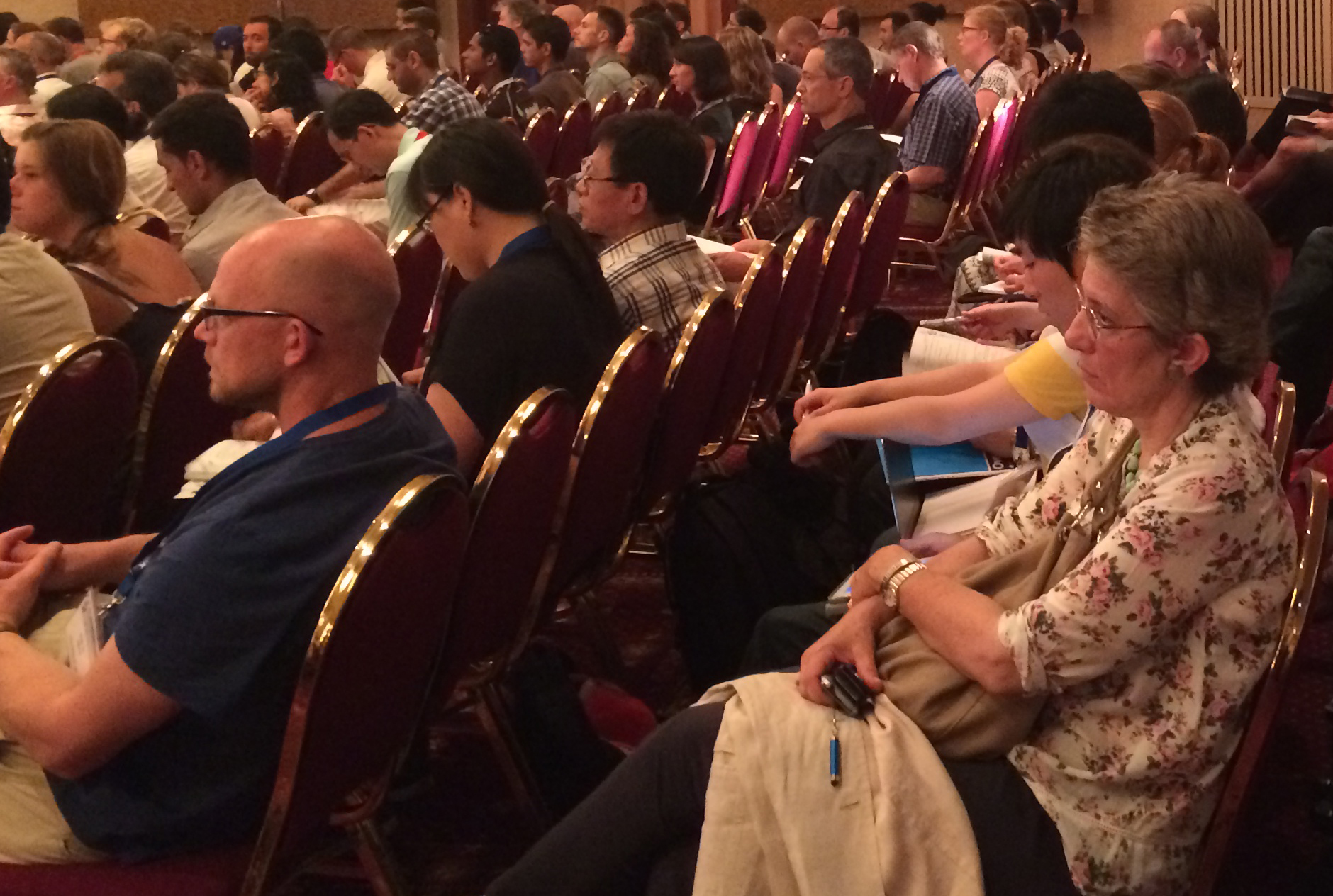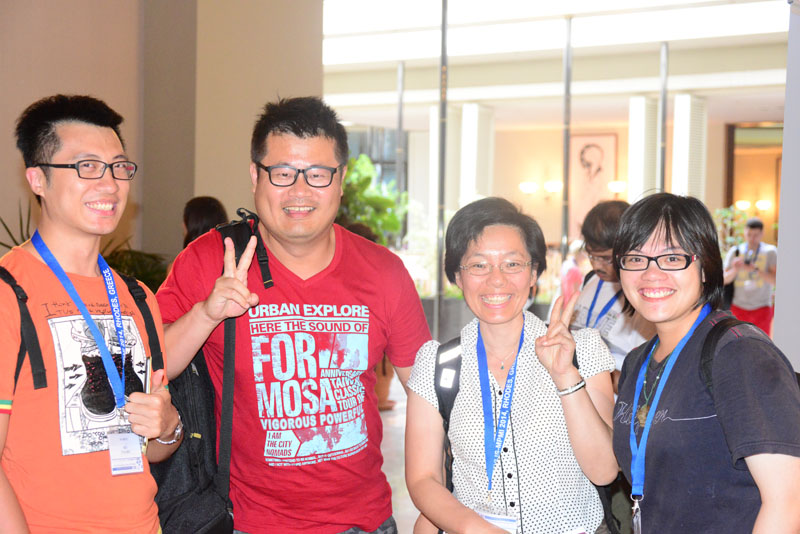|
|
Display Title Special Sessions
PageContent Pre-registration is required however there is no fee to attend.
Sunday, July 17
10:00 - 12:00
Huanglongbing (citrus greening): Insect, Bacterial, and Host Interactions - Chair: Gitta Coaker
- The problems and strategies of working with HLB. B. DAWSON, University of Florida, U.S.A.
- sGenome sequence and genetic diversity of the Huanglongbing pathogen Cadidatus liberibacter asiaticus. S. THAPA, Postdoc, UC Davis, U.S.A.
- Effectoromics of Huanglongbing (HLB)-associated pathogen. W. MA, UC Riverside, U.S.A.
- Sinorhizobium as a model system to study Liberibacter gene regulators. S. LONG, Stanford University, U.S.A.
- Insights into the Sec-dependent effectors of Candidatus Liberibacter asiaticus and development of novel control strategy against citrus HLB. N. WANG, University of Florida, U.S.A.
- Molecular and genetic interactions between Diaphorina citri and Candidatus Liberibacter asiaticus. M. CILIA, Boyce Thompson Institute, New York, U.S.A.
Rice and Pathogen Interactions - Chair: Guoliang Wang
- Investigating the cell biology of appressorium-mediated plant infection and tissue invasion by the rice blast fungus Magnaporthe oryzae. N. TALBOT, University of Exeter, UK
- Rice stripe virus overcomes NbREM-mediated inhibition of movement through interference of S-acylation. X. ZHOU, Institute of Plant Protection, Chinese Academy of Agricultural Sciences, China
- Durable and broad spectrum disease resistance to bacterial blight and bacterial leaf streak of rice. A. BOSSA-CASTRO, Colorado State University, U.S.A.
- Biological functions of rice immune factors targeted by Xanthomonas oryzae effectors. T. KAWASAKI, Kindai University, Japan
- Dissection of the APIP6-mediated ubiquitin-proteasome pathway in rice immunity against Magnaporthe oryzae. Y. NING, Institute of Plant Protection, Chinese Academy of Agricultural Sciences, China
- Fungal genetic tools in Magnaporthe oryzae for reactive oxygen species detection and identification of host basal immunity components. N. DONOFRIO, University of Delaware, U.S.A.
Bioinformatics Training I: Beginning Bionformatics on the Web - Chairs: Dan Mclean and Adelaide Rhodes
- Databases: iPlant/CyVerse. A. RHODES, Oregon State University, U.S.A.
- Databases: FungiDB; DOE JGI. B. TYLER, Oregon State University, U.S.A.
- Databases: ENSEMBL; SolGenomics; TAIR; Araport. D. MACLEAN, Sainsbury Laboratory, UK
- Annotation, and Its Challenges: Tools Like Web BLAST, PFAM, Interpro, SignalP. A. RHODES, Oregon State University, U.S.A.
- Ontologies; PAMGO, B. TYLER. Oregon State University, U.S.A.
- Useful Features in NCBI and Uniprot. A. RHODES, Oregon State University, U.S.A.
- Training Resources. A. RHODES, Oregon State University, U.S.A.
- Software Carpentry. D. MACLEAN, Sainsbury Laboratory, UK

Rust Fungi – Molecular Mechanisms Underlying Disease and Resistance - Chairs: Peter van Esse and Gusui Wu (Sponsored by DuPont Pioneer)
- Transfer of a NLR gene from pigeonpea into soybean confers resistance to Asian soybean rust. H. PP. VAN ESSE, The 2Blades Foundation, The Sainsbury Laboratory, UK
- A multi-pronged approach to elucidate the molecular basis of rust virulence and non-host resistance in Brachypodium distachyon. M. FIGUEROA, University of Minnesota, U.S.A.
- EffectorP: Using Machine Learning to Predict Fungal Effector Proteins and Their Subcellular Localization in the Plant Cell. J. SPERSCHNEIDER, CSIRO, Australia
- Deciphering host specificity in poplar rust fungi through life-cycle transcriptomics and comparative genomics. S. DUPLESSIS, INRA France
13:00 - 15:00
Recent Advances Agrobacterium Biology - Chair: Kiran Mysore (Sponsored by the Noble Foundation)

- Molecular mechanisms of the Agrobacterium Type VI DNase effector secretion and antibacterial activity during plant colonization. E. LAI, Academica Sinica, Taiwan
- Modulation of host defenses by the Type VI Secretion System (T6SS) of Agrobacterium tumefaciens. L. BANTA, Williams College, U.S.A.
- Agrobacterium tumefaciens: A model system to investigate polar growth in bacteria. P. ZAMBRYSKI, University of California, U.S.A.
- Potential novel role for the Agrobacterium virulence effector protein VirE2 in modulating plant gene expression. S. GELVIN, Purdue University, U.S.A .
- Activity of plant non-homologous end-joining DNA repair proteins is not required for Agrobacterium T-DNA integration. K. MYSORE, The Samuel Roberts Noble Foundation, U.S.A.
- A functional bacterium-to-plant DNA transfer machinery of Rhizobium etli. V. CITOVSKY, State University of New York at Stony Brook, U.S.A.
Molecular Dissection of Wheat Diseases - Chair: Peter Solomon
- Harnessing plant immune receptors for resistance to wheat stem rust. P. DODDS, CSIRO Agriculture, Australia
- Exploring the Fusarium graminearum genome and the compatible interaction with wheat floral tissue. K. HAMMOND-KOSACK, Rothamsted Research, UK
- Effector biology of Zymoseptoria tritici during interactions with wheat and with non-host plants. G. KETTLES, Rothamsted Research, UK
- Blast: a serious wheat disease. B. VALENT, Kansas State University, U.S.A.
- Resistance gene cloning in wheat by mutational genomics. B. WULFF, John Innes Centre, UK
- The Parastagonospora modorum-wheat interaction; is it as simple as we think?. S. BREEN, Australian National University, Australia
Bioinformatics Training II: So You've Got Your High Throughput Data - Now What? - Chairs: Dan Mclean and Adelaid Rhodes
- Genome assembly and annotation: best practices, best tools. D. MACLEAN, Sainsbury Laboratory, UK
- RNAseq: Best Practices, Best Tools. D. MACLEAN, Sainsbury Laboratory, UK and A. RHODES, Oregon State University, U.S.A.
- Metagenomics: Best Practices, Best Tools. D. MACLEAN, Sainsbury Laboratory, UK
- Data Carpentry. A. RHODES, Oregon State University, U.S.A.
 
|
